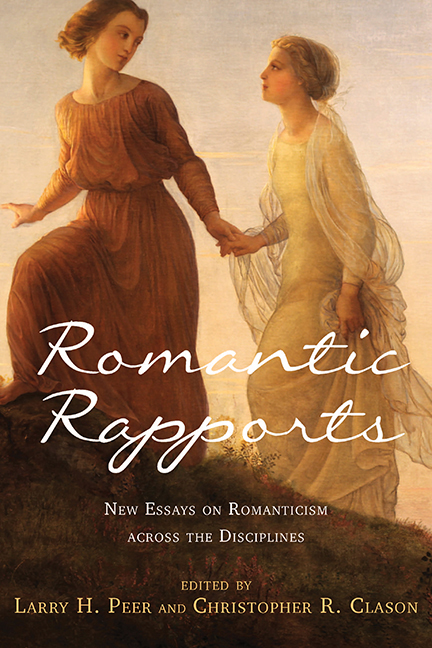Book contents
- Frontmatter
- Dedication
- Contents
- Acknowledgments
- Introduction: The Polyvalence of Romanticism
- Part I Romanticism and the Literatures
- Part II Romanticism, Music, and the Visual Arts
- 5 Liminal Transgressions: Gautier's Vampires in Giselle and La morte amoureuse
- 6 The Iconography of Girodet's Endymion during the French Revolution
- Part III Romanticism and Science, Technology, Philosophy
- Notes on the Contributors
- Index
5 - Liminal Transgressions: Gautier's Vampires in Giselle and La morte amoureuse
from Part II - Romanticism, Music, and the Visual Arts
Published online by Cambridge University Press: 30 August 2017
- Frontmatter
- Dedication
- Contents
- Acknowledgments
- Introduction: The Polyvalence of Romanticism
- Part I Romanticism and the Literatures
- Part II Romanticism, Music, and the Visual Arts
- 5 Liminal Transgressions: Gautier's Vampires in Giselle and La morte amoureuse
- 6 The Iconography of Girodet's Endymion during the French Revolution
- Part III Romanticism and Science, Technology, Philosophy
- Notes on the Contributors
- Index
Summary
THÉOPHILE GAUTIER's WORKS La morte amoureuse and Giselle both fall within the species of Romantic fantasy and lend themselves to a liminal analysis. This chapter will rely on key terms from Victor Turner and Arnold van Gennep to define the liminal while Tzvetan Todorov's definition of the fantastic will frame the analysis. Our reading of these two texts of the fantastic will show how and why these works have such different outcomes for the two male heroes, each of whom is going through his own rite of passage and is threatened along the way by vampire characters.
The vampire figure plays an important role in this analysis because, as a liminal symbol, it represents the dangerous Other. As Erik Butler points out: “The reason for the popularity of the vampire in the West is that the figure permits the representation of foreignness within a recognizable framework—that is, the creature marks sites in a seemingly unified field and reveals points of trouble and discontinuity that are glossed over by received ideas and the routines of everyday life. At the same time, as a putative outsider, the vampire never wholly subverts the borders it transgresses and in fact reinforces them” (2). A study of two such vampires throws an interesting light on Romanticism across the disciplines.
The 1836 story La morte amoureuse tells the fantastic tale of Romuald, a young seminarian on the cusp of taking his vows and beginning his new life as a small-town priest. This ritual is interrupted for him and his life is forever changed when he lays eyes for the first time on the beautiful courtesan Clarimonde, who we later learn is a vampire. The story is told by Romuald, who reflects on this pivotal moment in his life that caused him “la perte de [son] âme” (193; the loss of [his] soul).1 Clearly this tale relies on vampire folklore and it is situated among the many vampire stories that were popular in Europe in the nineteenth century. Beginning with John Polidori's The Vampyre (1819), originally attributed to Lord Byron and then adapted to the stage in 1820 by Charles Nodier, Europe's fascination with vampire tales was undeniable.
- Type
- Chapter
- Information
- Romantic RapportsNew Essays on Romanticism across the Disciplines, pp. 81 - 95Publisher: Boydell & BrewerPrint publication year: 2017



